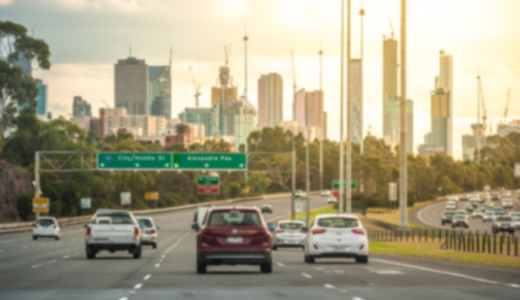Insurance company report reveals hotspots for car crashes nationwide
By
- Replies 27
Navigating the roads can be tricky, and safety behind the wheel is paramount for our seasoned drivers.
But did you know that some roads are statistically more dangerous than others?
A recent report has illuminated Australia's most perilous stretches of tarmac, and this information is essential for anyone driving.
Based on a staggering 4.3 million motor claims, the report identified the hotspots for car crashes nationwide from 2014 to 2023.
According to AAMI's Crash Index Decade of Driving report, plenty of roads in Melbourne's northeast top the list.
This road has seen the highest number of accidents in the past decade.
Following a speed reduction trial on Plenty Road in 2022, AAMI Motor Claims manager Leah James revealed a significant drop in accidents.
‘Following the adoption of the reduced speed limit, our data showed a 26 per cent reduction in the number of accidents, demonstrating the positive impact the AAMI Crash Index has had on saving lives,’ she said.
The Hume Highway in Liverpool, NSW, and the Bruce Highway in Queensland follow closely behind.
Other dangerous roads include Albany Highway in Western Australia, Canberra Avenue in the ACT, Marion Road in South Australia, Sandy Bay Road in Tasmania, and the Stuart Highway in the Northern Territory.
Many of these roads have maintained their risky reputations for over half of the past decade, indicating that while they are busy, they are also hazardous.
The report also revealed who is most likely to be involved in a crash, with men slightly more prone to accidents than women (54 per cent compared to 46 per cent).
However, it's the age factor that might surprise you: drivers aged 65 and over have been identified as the most dangerous behind the wheel.
The types of collisions that occur most frequently are also of concern.
Twenty-six per cent of accidents involve nose-to-tail crashes, suggesting a national tendency to tailgate.
Failing to give way is responsible for 19 per cent of crashes, while 17 per cent occur when cars are accidentally damaged while parked.
The report pinpoints the riskiest times to be on the road.
Afternoons between 1 pm and 4:30 pm are the peak times for crashes, coinciding with school pick-ups and the end of the workday rush.
There have also been many incidents in the morning slot from 9:30 am to 1 pm and the evening period from 4:30 pm to 8 pm.
‘This coincides with school pick up and is generally a time when the roads are busy, patience is wearing thin, drivers are tired from the day and racing to either get home or to their next destination,’ Ms James said.
‘This is when drivers need to have their wits about them and be vigilant behind the wheel to avoid those bumper-to-bumper collisions or an accident involving a child.’
Fridays are the worst days of the week for crashes, with the weekend days being the safest.

Have you driven on any of these dangerous roads? What are your tips for staying safe on the road, especially during peak times? Share your thoughts and advice in the comments below.
But did you know that some roads are statistically more dangerous than others?
A recent report has illuminated Australia's most perilous stretches of tarmac, and this information is essential for anyone driving.
Based on a staggering 4.3 million motor claims, the report identified the hotspots for car crashes nationwide from 2014 to 2023.
According to AAMI's Crash Index Decade of Driving report, plenty of roads in Melbourne's northeast top the list.
This road has seen the highest number of accidents in the past decade.
Following a speed reduction trial on Plenty Road in 2022, AAMI Motor Claims manager Leah James revealed a significant drop in accidents.
‘Following the adoption of the reduced speed limit, our data showed a 26 per cent reduction in the number of accidents, demonstrating the positive impact the AAMI Crash Index has had on saving lives,’ she said.
The Hume Highway in Liverpool, NSW, and the Bruce Highway in Queensland follow closely behind.
Other dangerous roads include Albany Highway in Western Australia, Canberra Avenue in the ACT, Marion Road in South Australia, Sandy Bay Road in Tasmania, and the Stuart Highway in the Northern Territory.
Many of these roads have maintained their risky reputations for over half of the past decade, indicating that while they are busy, they are also hazardous.
The report also revealed who is most likely to be involved in a crash, with men slightly more prone to accidents than women (54 per cent compared to 46 per cent).
However, it's the age factor that might surprise you: drivers aged 65 and over have been identified as the most dangerous behind the wheel.
The types of collisions that occur most frequently are also of concern.
Twenty-six per cent of accidents involve nose-to-tail crashes, suggesting a national tendency to tailgate.
Failing to give way is responsible for 19 per cent of crashes, while 17 per cent occur when cars are accidentally damaged while parked.
The report pinpoints the riskiest times to be on the road.
Afternoons between 1 pm and 4:30 pm are the peak times for crashes, coinciding with school pick-ups and the end of the workday rush.
There have also been many incidents in the morning slot from 9:30 am to 1 pm and the evening period from 4:30 pm to 8 pm.
‘This coincides with school pick up and is generally a time when the roads are busy, patience is wearing thin, drivers are tired from the day and racing to either get home or to their next destination,’ Ms James said.
‘This is when drivers need to have their wits about them and be vigilant behind the wheel to avoid those bumper-to-bumper collisions or an accident involving a child.’
Fridays are the worst days of the week for crashes, with the weekend days being the safest.
Key Takeaways
- Plenty Road in Melbourne's north-east has been identified as Australia's most dangerous road for crashes according to AAMI's Crash Index Decade of Driving report.
- The report, which analysed 4.3 million motor claims from 2014 to 2023, revealed men are more likely to be involved in crashes than women, and drivers aged 65 and over are considered the most dangerous.
- The most common collisions are nose-to-tail crashes and failing to give way, indicating issues with tailgating and distracted driving.
- Government agencies have provided the data to assist with road improvements, policy changes, and future road project planning.








